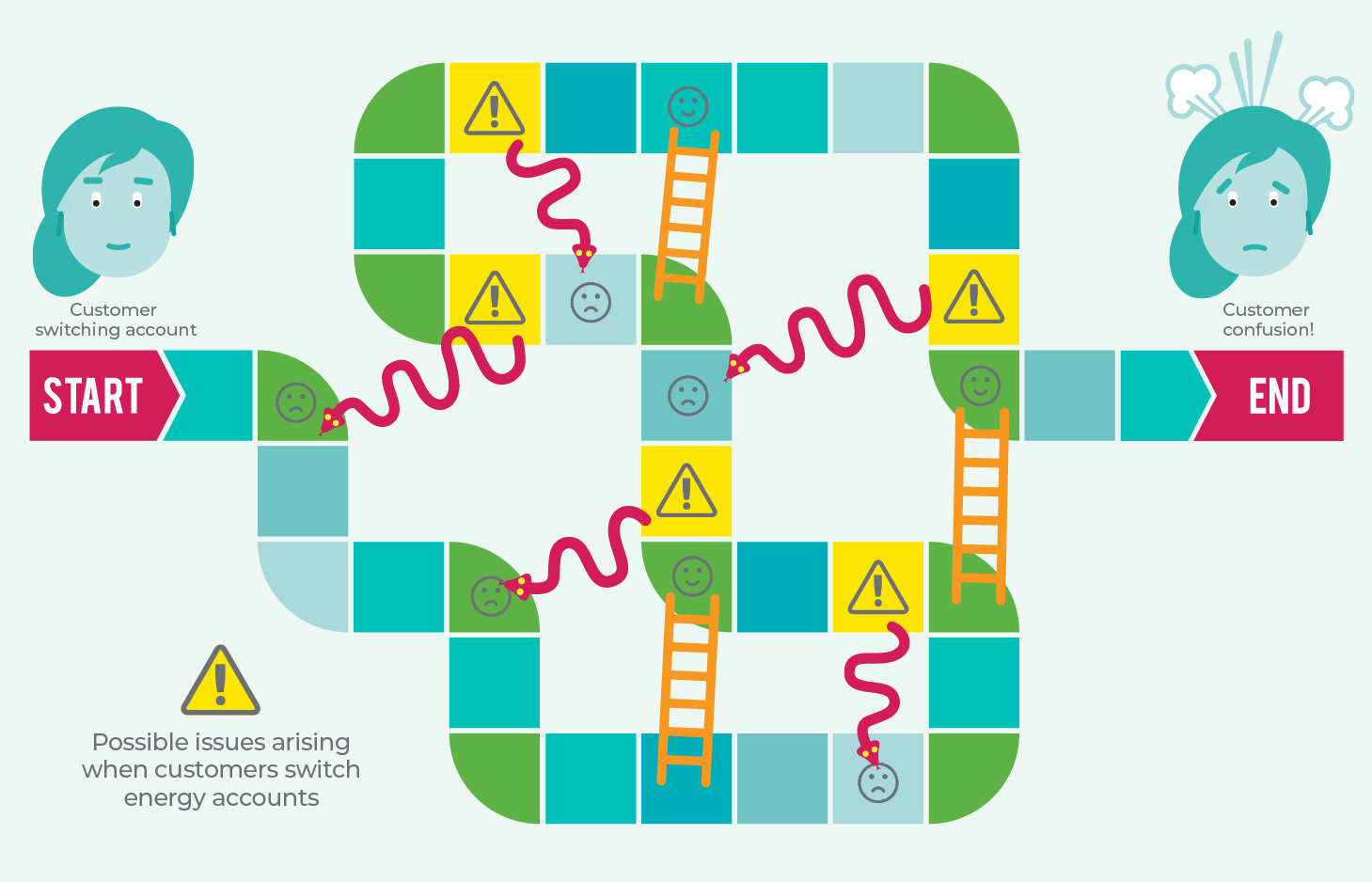
March 2023
There’s been a positive shift in the energy market towards empowering customers to make choices that suit their circumstances. Encouraging engagement with the market enables customers to benefit from better deals when they want them. The 2019 rule change giving energy customers the option to switch providers within as little as two days could be seen as an example of this empowerment, but has this rule change delivered all it was meant to, or are there unexpected consequences?
EWON is not involved in the business-to-business processes of energy retailers, however we see the outcomes when things don’t go to plan. In this Spotlight On we’ll share the unique vantage point EWON has on unexpected consequences arising from these new rules. Our complaints data provides customer insights into the switching process, and our dispute resolution work reveals aspects of the system that need refining. We’ll also outline the new issues that have come from external market changes.
We understand that new switching rules may be working for some customers – but together, we need to make it work for all customers – to reduce complaints and increase trust in the energy sector.
Operating in an evolving environment
What happens when a 2019 rule change is implemented two years later - in a rapidly evolving economic and operating environment that none of us expected?
Since 2019, economic pressures, energy price volatility, COVID-19 and increased debt have created a very different environment for these rules to operate in. Cost of living pressures mean customers are now looking to reduce costs wherever possible – switching retailers for a better deal has never been more urgent, so switching arrangements now need to be also aligned with this driver and other emerging changes.
There has not been a significant increase in the number of customer transfers1, however, this may change. Without a monitoring or reporting system to assess the two-day switching process outcomes for customers, it is difficult to determine whether the rules are achieving their intended goals.
What is EWON seeing?
"I would like the provider to be transparent with new customers about this process and at least give customers the option of waiting for the next meter reading date.” EWON customer
Customer complaints to EWON share common themes of confusion and poor communication. We are shining a spotlight on these issues because they undermine consumer trust and engagement – the very things that two-day switching was designed to increase.
Retailers have the flexibility to choose how customers transfer to them, based on the circumstances of each customer. Some retailers are offering their customers a choice of when to switch, and providing them with sufficient switching information. These retailers are ensuring a smooth transfer process for customers. This approach needs to be adopted by all retailers.

 Customers are confused
Customers are confused
- Customers with manually read meters are not always being advised that they might be transferred up to 65 business days before they made the transfer request.2
- Customer fixed term benefit period application timeframes become unclear if not explained, when the transfer date is before the contract date.
- Customers are confused about whether the transfer date impacts the start of their cooling off period.
- Inconsistent messaging, with some customers receiving notices from retailers advising that transfers may take up to three months, suggests some retailers have not updated their messaging to reflect two-day switching practices.
 Customers are struggling to get answers
Customers are struggling to get answers
- These customers include those not being given a choice over their transfer date. Voice recordings indicate unclear advice is provided by customer service representatives.
- They often end up being billed for the same period by two retailers. They may have made advance payments to their previous retailer and are unaware of who should have billed them, who to contact for clarification, and how to get a refund.
- Additional burdens are being placed on customers who are then directed to seek a refund from the previous retailer.
- Uninformed customers do not know which retailer to contact to dispute an estimated meter reading.
 Some customers end up paying more
Some customers end up paying more
- Customers who cancel the transfer in the 10 day cooling off period and are then transferred back to their previous retailer, can experience further price shock when they find their prior market retail contract is no longer available.
- Customers may end up being billed at higher rates by the new retailer for a period prior to the transfer request, a time when their original retailer charged a lower price.
- Where a customer transfers to receive a fixed term benefit from the date the customer initiated the switch, backdating the transfer moves the fixed term benefit dates and can reduce the benefit value.
 Some customers are unable to switch gas retailers quickly
Some customers are unable to switch gas retailers quickly
- Some customers have received retailer notification of a gas price rise, to be effective in 5 business days and then looked to transfer but were told it won’t take effect until the next scheduled meter read date (up to one billing period).
Gas transfer rules have always allowed transfer on estimated bills and two-day switching for gas is not precluded by the new rules.
Why is nobody talking about this?
Well actually customers are, but in customer language not energy jargon.
The issues arising from two-day switching and transfer processes do not fit neatly into typical energy complaint categories. Customers are unlikely to call their provider and say they have a complaint about two-day switching. However, these customers ARE telling their providers – and EWON – that they are confused, unhappy with unexpected bills they don’t understand and frustrated that the process of changing provider wasn’t more clearly explained to them.
When we look closely at the complaints we receive, we can see there are multiple unexpected issues arising from the new transfer process. The issues may present themselves differently, but they all share a common underlying cause.
Insights gained from systemic issue analysis is not just an Ombudsman superpower. If retailers took a deep dive into their own complaints data, they would see the same issues.
.jpg) Call to action!
Call to action!
EWON is developing a stakeholder engagement plan to bring retailers and regulators together to identify and action solutions which improve the consumer experience while maintaining consumer protections.
Otherwise, these issues will continue to be a challenge for the foreseeable future due to:
- Continued economic pressures and anticipated further energy price rises
- The slower than anticipated roll out of smart meters, with the aim for completion not before 2030
- New government incentives which encourage customer engagement and switching
- The availability of competitive and innovative contracts and/or bundled services.
Now is the time to engage, talk and leverage industry knowledge and experience to address these issues.
There may be multiple solutions, and we will be discussing them with sector stakeholders – working together to find solutions.
Insights from our case work
A significant number of the complaints we receive relate to information customers have been given. The customer transfer process involves multiple steps and ways of communicating, including on the telephone, online and via email with trained customer service representatives. It also involves customers being required to engage and understand information in their contract, along with additional correspondence relating to transfers. This multi-pronged approach increases misinformation and confusion, and reduces customer trust in the sector.
We have previously reported two-day switching case studies in our quarterly EWON Insights reports covering Jan-Mar 2022 and Jul-Sep 2022. The following case studies support our findings and illustrate how EWON was able to assist customers through their transfer process confusion.
 A customer arranged to transfer to a new retailer after he received a price rise notification from his current retailer. On 6 June 2022 he received a welcome pack with a start date of 23 May 2022. The customer thought because the date was in the past, he was not able to exercise his cooling off rights.
A customer arranged to transfer to a new retailer after he received a price rise notification from his current retailer. On 6 June 2022 he received a welcome pack with a start date of 23 May 2022. The customer thought because the date was in the past, he was not able to exercise his cooling off rights. Based on additional information we obtained from the retailer, the transfer process was not explained to the customer. The customer advised us he had been financially disadvantaged by approximately $200 as the solar feed-in tariff with his previous retailer was higher and was not due to expire until August 2022 (which was when he thought that he would transfer to the new retailer).
Based on additional information we obtained from the retailer, the transfer process was not explained to the customer. The customer advised us he had been financially disadvantaged by approximately $200 as the solar feed-in tariff with his previous retailer was higher and was not due to expire until August 2022 (which was when he thought that he would transfer to the new retailer).


 Customers are confused
Customers are confused.jpg) Call to action!
Call to action!